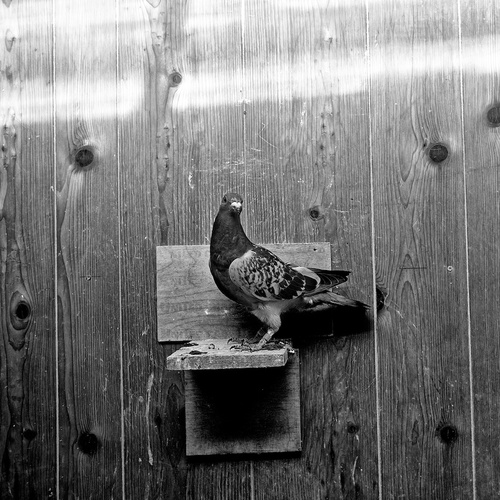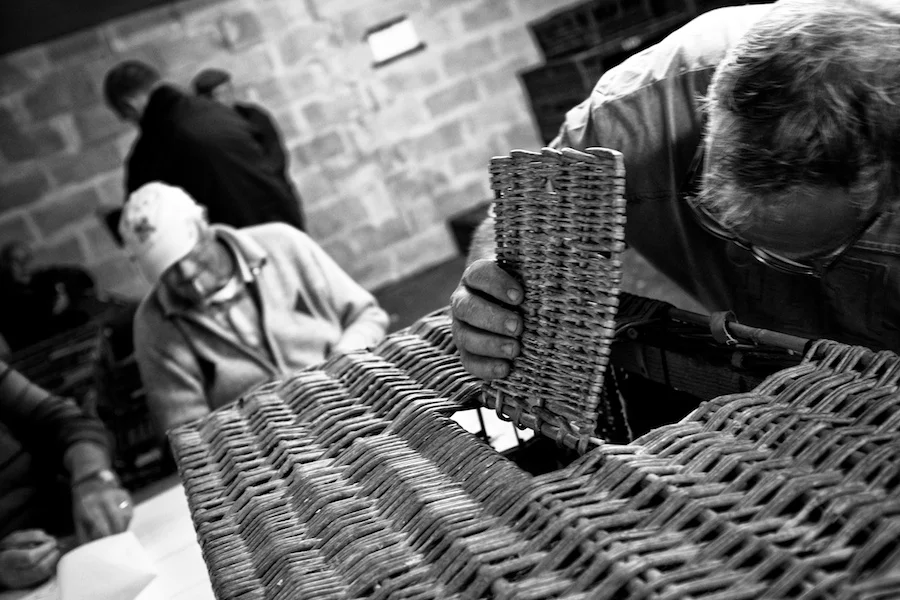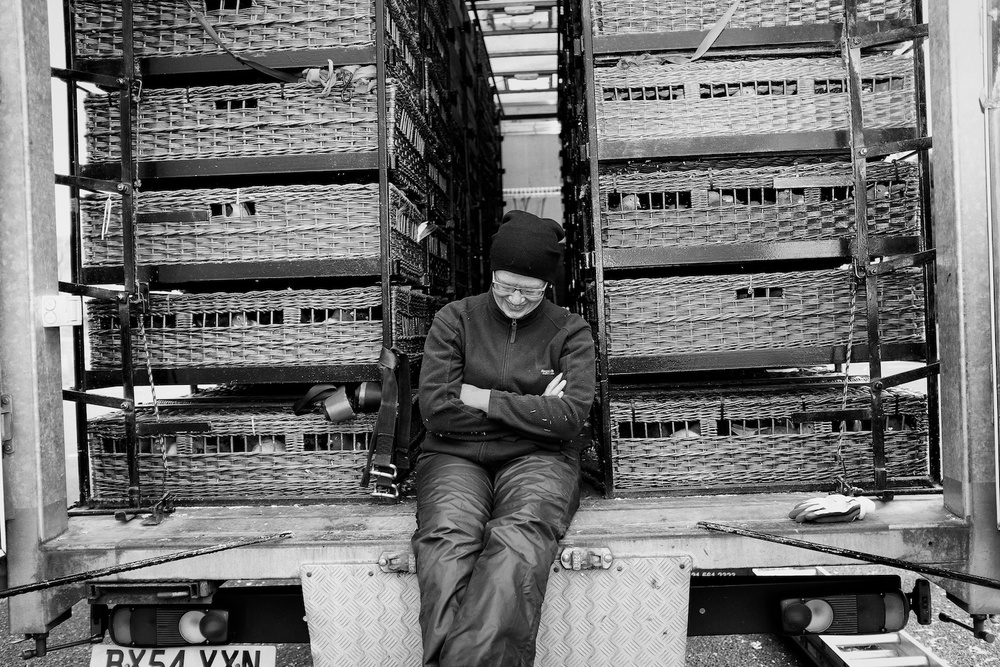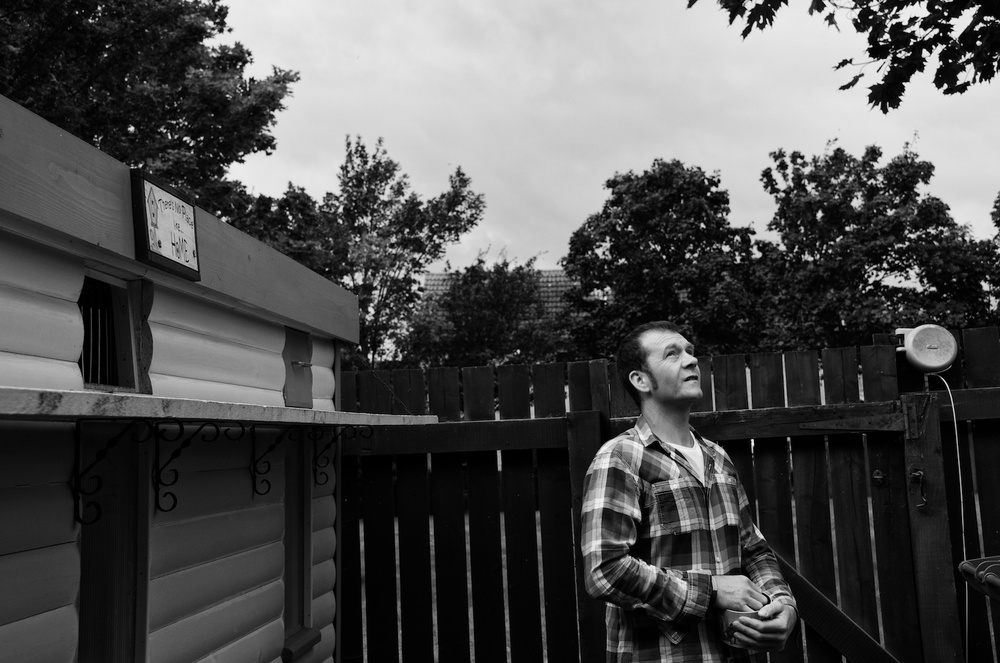In June 2012 I chanced upon the start of a pigeon race which led to me getting to know some of the members of the Springfield Homing Club who were good enough to give me an insight into their world.
Here's some extracts of words and photographs from the book I've produced entitled 'Rare Breed' in which I've documented my observations and thoughts on what I found.
It was reported in the local newspaper at the time that "the object of the Meeting was to discuss what steps could be taken for the formation of a Federation of Racing or Homing Pigeon Societies in the South West of Scotland". Representatives from Dumfries & Maxwelltown, Langholm, Annan, Lockerbie, Dalbeattie, Castle Douglas, Kirkcudbright, Wigtown and Whithorn Clubs and many individual fanciers were present.
The year was 1928. On the 11th of February at the Y.M.C.A. Institute in Dumfries eight pigeon racing clubs representing 200 members flying 1600 pigeons formed The Solway Federation of Racing Pigeon Societies.
Today eleven clubs make up the Federation, one of which is the Springfield Homing Club.
Fanciers
What turns men - and some women - into pigeon fanciers?
Should you inquire the answer isn’t for the money or the glamour but more likely for no other reason than ‘I’ve always done it’. If you push for more then you will get no clearer an answer. But if you watch and especially if you listen it is obvious. It’s family. It’s what you do. It’s what your father or your brother did. And on top of that there is also the thrill of the race. From the moment that the word goes out to say the race has begun the fancier wills his birds home until the first is sighted to be followed by a frantic rush to catch and stop the clock. That is why.
Race Marking
A pigeon race starts the evening before.
There are stories - and they are true stories - of fanciers who have moved house to improve their chances of winning a race. Then there are those that have tried to beat the system with deft of hand or clock fixing. Winning is important. And there’s the money. As in every sport that has ever had cash to win or bets placed there are always some tempted to stack the odds in their favour. But the many who are first and foremost pigeon fanciers will religiously uphold the rules that keep every bird in every race properly identified, logged, tracked and timed.
Race Marking, though is more than that. The routine is the same as it has always been but that has not resulted in a chore. There is comfort in the familiarity which allows the work to happen without needing much thought giving plenty of space for the serious business of catching up.
Cocks to the left, hens to the right.
The Wait
The wait is not a part of the plan but always happens.
As hectic and purposeful Race Marking is, what follows is a calm required by the wait for the arrival of the Convoyer which is travelling from Club to Club picking up the baskets on its journey south.
Being the most southerly of the Federation’s clubs, Springfield is the last pickup and so there is the inevitable pause in proceedings. Although there is clearly a palpable impatience to get finished and get home the wait generates space which gets filled with race talk, a bit of banter and more personal talk that can only happen between friends that go back a long way.
All talk stops on the arrival of the Convoyer.
The wait is important. It is important because it creates time.
The Liberation
Sandwiched by silence, the Liberation is an incredible few seconds of noise and energy.
There aren’t many women who drive a Convoyer full of birds out to the layby and keep them calm and watered overnight but Moira is one of them. Morning brings another wait. This one is more build up than wind down as she awaits the signal from the Race Controller which when it comes is followed by the release of an instinct that flies at 1218.100 yards per minute.
Racing pigeons are bred from January to April and will start the their first racing season in the July of the same year. Some race for up to six or seven years but half of that is more typical. Breeding a winner is as much an art as it is a science with pairing, feeding and training all playing a part. Fanciers each have their own methods and will protect their secrets and failures. After weaning at twenty four days the pigeons are exercised daily leading to basket training and being released or ‘tossed’ further and further from their loft to practice their homing instinct.
Eventually they will fly home from France
Race Day
Race Day is what it's all about.
Race Day is when the breeding, the training, the feeding and the good fortune either come together or are dashed by the vagaries of the weather or the hawks. Race Day is the time for another Wait - but this time rather than being followed by the reliability of the arrival of the Convoyer this Wait is followed by the unknown that is the time of the arrival of your first bird.
Race Day is either a day to remember or a day to take stock.
There is always another Race Day
Epilogue
Thirty years ago the Springfield Homing Club represented over thirty lofts. There are now ten.
In 2013 an auction of racing pigeons was held in Carlisle to raise funds for an Animals in War Memorial. The first bird promised was from H M The Queen
The People’s Dispensary for Sick Animals (PSDA) ‘Dickin Medal’ was instituted in 1943 to honour the work of animals in war. It is a bronze medallion, bearing the words "For Gallantry" and "We Also Serve" within a laurel wreath, carried on a ribbon of striped green, dark brown and pale blue. It is awarded to animals that have displayed "conspicuous gallantry or devotion to duty while serving or associated with any branch of the Armed Forces or Civil Defence Units". The award is commonly referred to as ‘the animals’ Victoria Cross’.
The medal was awarded fifty four times between 1943 and 1945 – including to thirty two pigeons – to acknowledge actions of gallantry or devotion during the Second World War. Several aircrews that ditched in the sea were saved owing to their location being communicated by the release of a homing pigeon.
Some today believe that pigeon racing is cruel and should be banned.
Nothing is perfect. Everything has its faults. There is however a need to weigh up what is good as well as what is imperfect before judging.































































